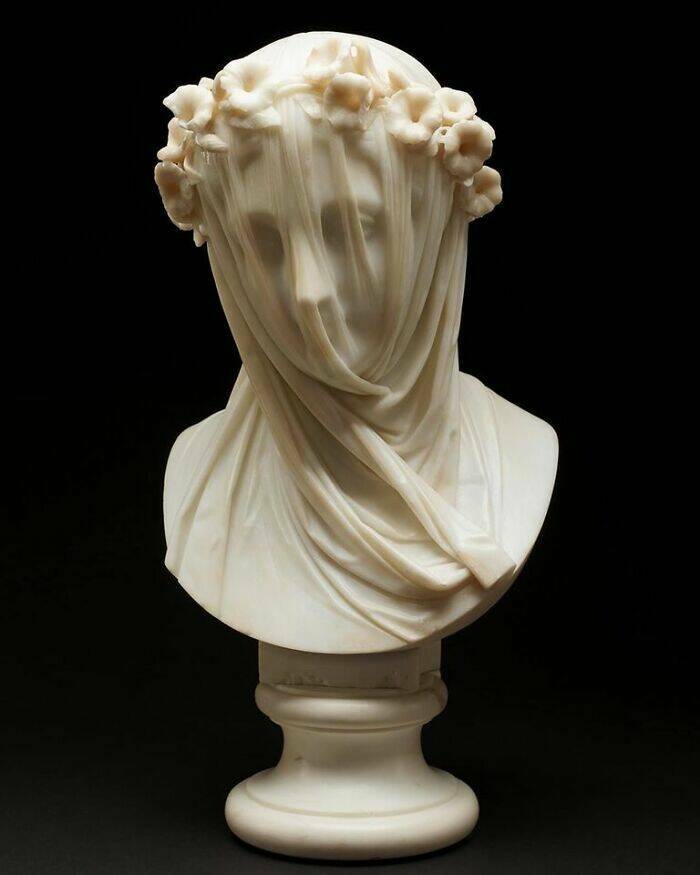"Veiled Lady" (Bust) By Raffaelo Monti, 1860. Marble

"This masterpiece is a wonderful example of sculptor Raffaelo Monti's skill. We can’t see through stone, but through tricks of light and polish, Monti created the illusion that we can. On his Veiled Lady, the top of the head and shoulders are polished smooth, to reflect light. But where the veil falls across the face, the marble is less polished. It reflects less light, suggesting the texture of fabric. Sculptures of veiled figures peaked in popularity during the 1700s in Italy, an opportunity for sculptors to show their technical mastery over marble. About a century later, Monti and other artists revived this technically demanding tradition."
3.

Brenda 1 year ago
#1 The coolest part is that it has hollowed out chambers and underground caves within it. The head is hollow and there are openings in the eyes and nostrils. They could light a fire inside and the eyes would glow and smoke would pour out his nose. That's some medieval sh*t, right there.







This is a shoop.
It is indeed a fake. Er, uh... I mean shoop.
Actually, it was changed because not everyone is a christian. It's more PC to use CE because it includes everyone, and not just those who don't really know anything and think their culture is the only one worth recognizing. Like you. I'm talking about you.